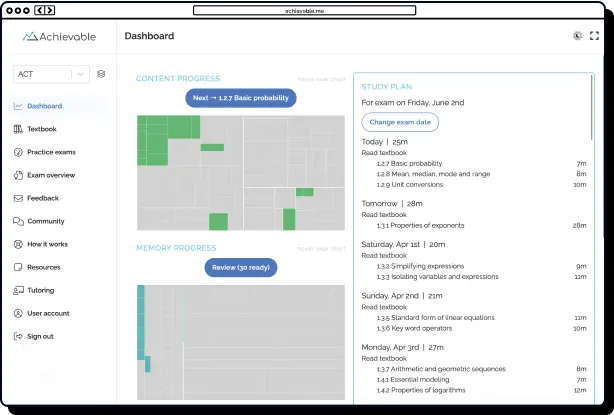
How to differentiate between pediatric from adult dermatology on the USMLE




Table of contents
- Distinguish pediatric from adult dermatology for accurate differentials
- Identify distinct clinical features of atopic dermatitis by age for USMLE differential diagnosis
- Recognize age-specific vasculitis patterns: Contrast Kawasaki disease with adult vasculitis for USMLE precision
- Identify pediatric cutaneous disorders that signal systemic disease: A USMLE diagnostic advantage
- Optimize USMLE dermatology performance with structured differential diagnosis grids
- Enhance diagnostic flexibility with mixed-age dermatology vignettes
This article is part 4 of 6 in our USMLE dermatology series, where we provide you with all the information you need to study for and ace dermatology-related questions and vignettes on your medical residency exams. In part 4, we dive into how skin-related conditions and illness manifest differently in adult and children.

Distinguish pediatric from adult dermatology for accurate differentials
Identify distinct clinical features of atopic dermatitis by age for USMLE differential diagnosis
As a USMLE candidate, you're expected to rapidly distinguish pediatric from adult dermatologic presentations - especially for high-yield conditions like atopic dermatitis (AD). Mastering these distinctions not only sharpens your exam performance but also builds clinical reasoning you'll use in practice.
How does atopic dermatitis differ in children versus adults - what's testable?
- Pediatric AD:
- Lesions usually appear exudative (oozing, crusted) and often show perifollicular accentuation (rash around hair follicles).
- Classic pediatric findings: pityriasis alba (hypopigmented facial patches) and Dennie-Morgan folds (infraorbital creases).
- Facial dermatitis is much more common in children than adults, with increased eyelid/conjunctival and posterior auricular involvement.
- Flexural eczema (antecubital, popliteal fossae) appears in a large portion of pediatric cases.
- Secondary infections, especially with Staphylococcus aureus or herpes simplex virus, are more frequent in children.
- Adult-onset AD:
- More likely to present with chronic, lichenified plaques and nummular (coin-shaped) eczema, especially on hands and head/neck.
- Asthma, allergic rhinitis, and food allergies are less common comorbidities than in kids (study on clinical-epidemiological differences).
- Adult flares are often triggered by psychological stress or psychiatric comorbidities (clinical analysis of adult vs pediatric AD).
Key management distinctions for exam and practice:
- Pediatrics: Emphasize allergy testing and environmental review due to frequent atopic comorbidities.
- Adults: Adjust therapy by location - low-potency corticosteroids for face/neck, super-potent steroids for hands. Emollients are essential in both.
- Routinely screen adults for psychological stressors.
"Despite these differences, disease severity is comparable in both children and adults - don't assume one group always has milder disease."
Emerging evidence suggests adult-onset AD may be a distinct clinical entity, not simply a persistent childhood disease. Understanding these nuances gives you a real edge on Step 1, Step 2, and in patient care.
Recognize age-specific vasculitis patterns: Contrast Kawasaki disease with adult vasculitis for USMLE precision
USMLE exams frequently test your ability to spot age-specific vasculitides. Kawasaki disease (KD) is a classic pediatric diagnosis - high-yield for the boards and a must-know for future clinicians. Distinguishing KD from adult vasculitides helps you avoid missteps and initiate timely management.
Pediatric Kawasaki disease: What you need to recognize for the exam
- At-risk: Children <5 years, especially of Asian descent.
- Criteria (5 of 6):
- Prolonged fever (≥5 days)
- Bilateral, non-exudative conjunctivitis
- Strawberry tongue/oral mucositis
- Polymorphous truncal rash
- Extremity changes (peeling, erythema, swelling)
- Cervical lymphadenopathy (≥1.5 cm)
- Major risk: Untreated KD can cause coronary artery aneurysms in up to 25%, the leading cause of acquired heart disease in developed countries.
USMLE pearl: A child with ≥4 classic non-fever symptoms (plus cardiac involvement) = Kawasaki disease. Early IVIG (within 10 days) reduces aneurysm risk from 25% to 5%.
Adult Kawasaki disease: Rare, atypical, and a diagnostic pitfall
- Exceptionally rare; often misdiagnosed as an infection.
- Symptoms appear sequentially, not all at once.
- Key differences in symptom manifestation:
| Symptom | Adults | Children |
|---|---|---|
| Cervical adenopathy | 93% | 15% |
| Hepatitis | 65% | 10% |
| Arthralgia | 61% | 24-38% |
| Coronary aneurysm | 5% | 18-25% |
| Thrombocytosis | 55% | Nearly 100% |
Source: PMC rare adult KD case review
Coronary involvement is much less common in adults, and classic features are often absent, making adult KD a board-level diagnostic challenge (adult case analysis in European Heart Journal).
Other age-specific vasculitides to know:
- Giant cell arteritis: Affects adults >50, presents with temporal headache and jaw claudication.
- Takayasu arteritis: More common in women <40, with large-vessel involvement. Source: Nature Reviews Rheumatology vasculitis summary
"A 24-year-old with fever, rash, and prominent cervical lymphadenopathy? Think adult KD, even if coronary findings are absent. A 60-year-old with headache and jaw pain - think giant cell arteritis."
For the USMLE, recognizing these age patterns is critical. Top scorers quickly spot when a rash, fever, and lymphadenopathy in a young adult isn't just a viral exanthem, but a red flag for Kawasaki disease.

Identify pediatric cutaneous disorders that signal systemic disease: A USMLE diagnostic advantage
The boards will challenge you to separate benign pediatric rashes from those signaling serious systemic disease. This skill is vital for top marks and safe clinical decision-making.
Why does this matter for you? Many pediatric rashes mimic harmless conditions but actually herald critical systemic illness. The USMLE rewards you for linking key skin findings with underlying multi-organ involvement.
High-yield pediatric rashes to recognize as systemic warning signs:
- Juvenile dermatomyositis (JDM): May look like eczema or a hypersensitivity reaction, but signals aggressive autoimmune myopathy. Watch for heliotrope rash (purple eyelids) and Gottron's papules (scaly knuckle plaques). Early recognition prevents irreversible weakness (review of juvenile dermatomyositis skin findings).
- Langerhans cell histiocytosis (LCH): Mimics seborrheic dermatitis or diaper rash, but often signals multisystem pathology. Crusted papules on trunk, face, or groin are key clues (pediatric dermatology quiz, LCH clinical manifestations PDF).
- Neonatal lupus and Kawasaki disease: Annular lesions can look like tinea; diffuse erythema may resemble viral exanthems. Early identification prevents complications like heart block or aneurysms.
"The rash of dermatomyositis in childhood can be mistaken for atopic dermatitis or an acute allergic reaction," but prompt recognition dramatically improves prognosis. (skin signs of systemic disease in childhood - NCBI)
USMLE tip: Always evaluate pediatric rashes for systemic features: fever, muscle weakness, hepatosplenomegaly, lymphadenopathy. High scorers habitually correlate skin findings with multisystem involvement, identifying when a rash is the first sign of a deeper problem.
Optimize USMLE dermatology performance with structured differential diagnosis grids
High-performing USMLE takers use differential diagnosis grids to compare pediatric and adult dermatology at a glance. These tools clarify distinguishing features, improve pattern recognition, and speed up question-solving.
For example, in atopic dermatitis:
- Pediatric AD: Exudative lesions, perifollicular accentuation, Dennie-Morgan folds.
- Adult AD: Chronic lichenification, hand-specific eczema, periocular involvement.
Structured tables can cut diagnostic errors in complex cases and lighten your cognitive load for rapid recall.
Reference tool: The AAP Pediatric Dermatology Quick Reference Guide - 5th Edition features "Look-alike Table with Differentiating Features" for high-yield pattern recognition. Use grids to differentiate:
- Plaque psoriasis (adults) vs. guttate psoriasis (children)
- Neonatal acne (transient) vs. adolescent acne (hormonal)
- Rare pediatric lichen planus or rosacea (age-specific management) (review of adult skin diseases in pediatric patients)
Grids also help you remember timelines: regression of infantile hemangiomas vs. persistence of adult vascular lesions, or distinguishing diaper dermatitis in infants from occupational dermatitis in adults. Making grid-based comparisons part of your study routine can cut diagnostic time on challenging questions.
Use tables consistently to reinforce dermatology differentials and maximize your USMLE score.
Enhance diagnostic flexibility with mixed-age dermatology vignettes
USMLE vignettes often test your ability to shift between pediatric and adult frameworks - sometimes within the same exam block. Top scorers excel by instantly adjusting their approach to the patient's age, even under time pressure.
Why is this a clinical and testing advantage?
- Age of onset provides a powerful diagnostic clue. For example, Scarlet fever is usually in children, while melanoma and herpes zoster are more common in adults over 60 (synthetic medical education in dermatology using generative AI).
- Diagnostic flexibility, the skill to toggle between age-based reasoning, is associated with higher accuracy. Dermatologists achieve a Mean Reciprocal Rank (MRR) of 0.757 in mixed-age vignettes, compared to 0.355 for residents (interactive diagnosis ranking in simulated dermatology vignettes).
- Practice with cases featuring similar-appearing diseases in both age groups (e.g., eczema, psoriasis) builds adaptability and improves diagnostic precision (Dermatology Practical & Conceptual journal study).
High-yield study strategies:
- Create practice sets that randomize patient ages and highlight overlapping morphologies.
- Focus on age-driven epidemiology, not just on morphological features. Practice until you reflexively associate "vesicular rash in a preschooler" or "ulcerated lesion in a 65-year-old" with the correct differentials.
- Use vignettes with missing age data and challenge yourself to infer age from clinical clues.
"Structured clinical descriptions that highlight age-appropriate features rapidly boost diagnostic ranking, even under time constraints."(diagnosis ranking study in dermatology vignettes - NCBI)
In summary, mastering age-based differences in dermatology is a high-impact skill for USMLE excellence. Through deliberate practice with mixed-age scenarios, you'll build the diagnostic agility that sets top candidates apart.
Click here for part 5, "Stay ahead of USMLE dermatology trends." Read on to learn how to stay up-to-date with exam topics, shape your study strategy, and how you can apply the knowledge learned to real-world settings.

